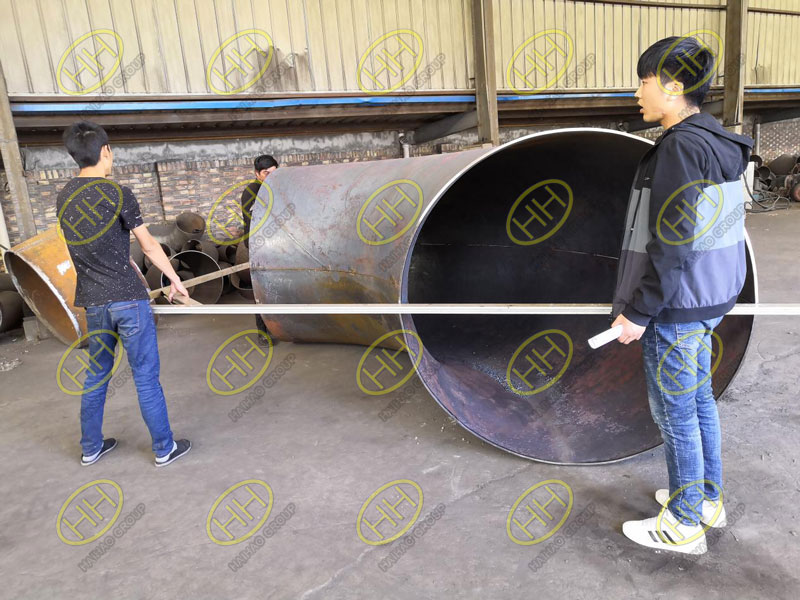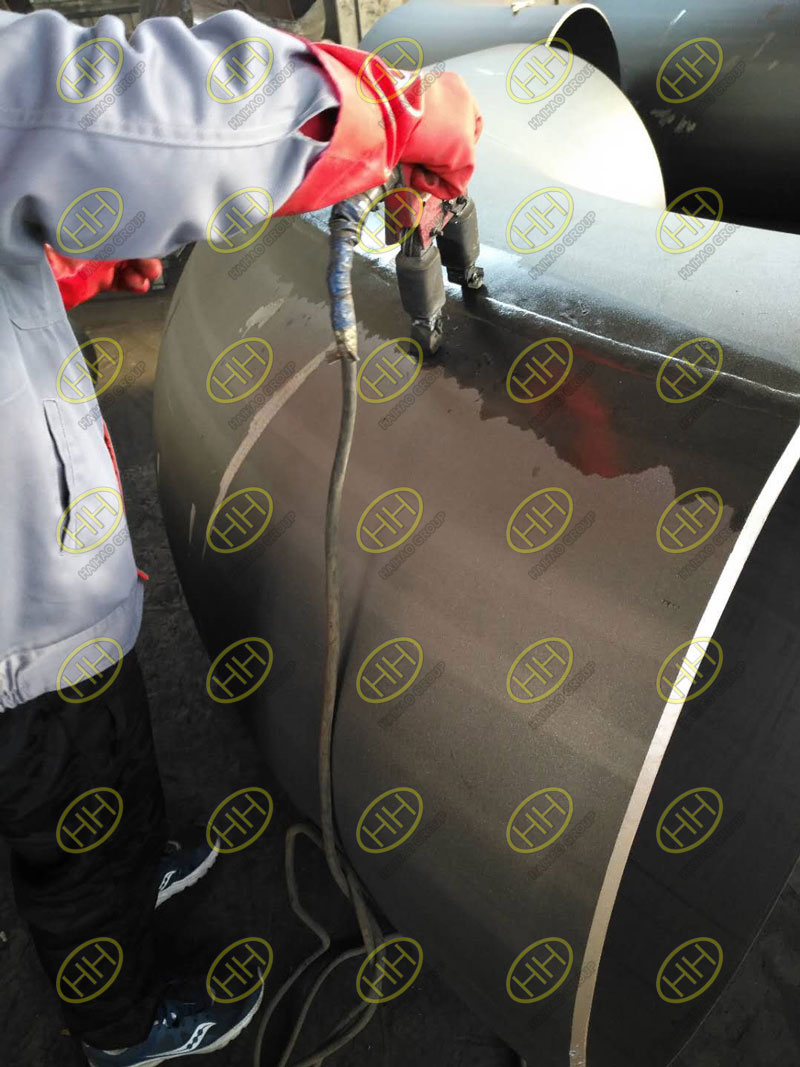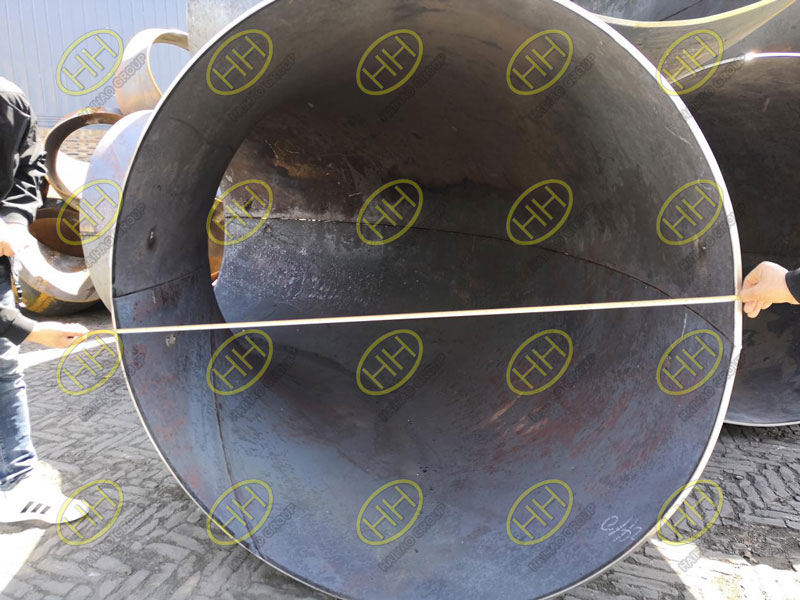Quality inspection of welding elbow
The weld of the welded elbow must be inspected,which is also an important measure to ensure the quality of the weld. After the completion of the elbow welding, the weld joint shall be inspected according to the technical requirements of the product. Any defects that do not meet the technical requirements shall be repaired in time (such as direct disposal that cannot be repaired if it is seriously unqualified). Common inspections of welding quality include visual inspection, non-destructive testing and mechanical performance testing. These three are complementary to each other, and they are mainly based on non-destructive testing.

Degree and center to end checking of big size elbow
1. Visual inspection: generally based on the naked eye observation, sometimes with a 5-20 times magnifying glass for observation. Through visual inspection, surface defects of weld elbow welds, such as undercuts, welds, surface cracks, pores, slag inclusions, and weld penetration, can be found. The dimensions of the weld can also be measured using a weld detector or template.
2.Non-destructive testing: Inspection of defects such as slag inclusions, pores and cracks hidden inside the weld. At present, the most common use is X-ray inspection, as well as ultrasonic flaw detection and magnetic flaw detection. Ultrasonic flaw detection is much simpler than X-ray photography and is therefore widely used. However, ultrasonic flaw detection often can only be judged based on operational experience, and can not leave a test basis. For internal defects that are not deep from the surface of the weld and extremely small cracks on the surface, magnetic flaw detection can also be used.

Magnetic particle testing for large diameter elbow welds in Haihao Group
3.Hydraulic test and air pressure test: For pressurized containers requiring sealing, hydraulic pressure test and/or air pressure test shall be carried out to check the sealing and pressure bearing capacity of the weld. The method is to inject 1.25-1.5 times working water or a working pressure gas (mostly air) into the container for a certain period of time, then observe the pressure drop in the container and observe whether there is leakage outside. According to these, it can be assessed whether the weld is qualified.

Diameter checking of big size elbow
4.The mechanical performance test of the elbow: non-destructive testing can find the inherent defects of the weld, but can not explain the mechanical properties of the metal in the heat affected zone of the weld, so sometimes the welded joint should be subjected to tensile, impact, bending and other tests. These tests were performed by the test panels. The test panels used are preferably welded together with the longitudinal joints of the cylinder to ensure consistent construction conditions. The test panels were then tested for mechanical properties. In actual production, only welded joints of new steel grades are generally tested in this respect.
As a professional piping supplier,to ensure the quality of our products,our products are subject to stringent quality testing and safe packaging to ensure that you can use in your industry.If you want to know more about our products,please feel free to contact us.Email:sales@haihaogroup.com

